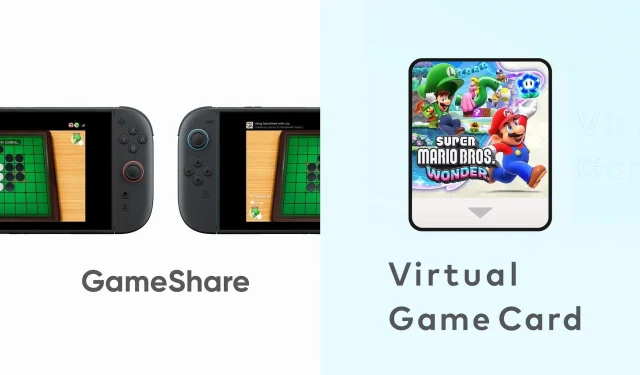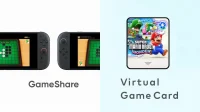The arrival of the Nintendo Switch 2 is generating considerable excitement among gaming enthusiasts, with only a few months remaining until its launch. Nintendo has unveiled an array of innovative features designed to enhance the gaming experience, among which the GameShare and Virtual Game Card capabilities stand out. These features enable seamless sharing of games among players, demonstrating Nintendo’s commitment to fostering community and engagement.
However, the distinctions between these two game-sharing methods might not be immediately clear to all users. In this comprehensive overview, we will clarify how GameShare differs from the Virtual Game Card, ultimately guiding you towards the most suitable choice for your gaming habits.
Understanding GameShare and Virtual Game Card
GameShare is a feature designed for local multiplayer gaming. It allows one player to share a game with up to three other players connected to the same local network. In this setup, only the game owner is required to purchase the title. It’s important to note that if the owner disconnects from the network, everyone loses access to the game. Additionally, GameShare is integrated with GameChat, allowing players to monitor each other’s progress. Currently, this feature is available for select titles on the Nintendo Switch 2, although owners of the original Switch and Switch Lite can enjoy the benefits of shared games from the newer console.
Conversely, the Virtual Game Card feature introduces a more flexible approach to digital game ownership. Users can “eject”a digital game from their library and share it with another player’s system through a one-time local wireless connection. This method is particularly advantageous for families utilizing a Nintendo Account Family Group, permitting game borrowing among up to eight accounts. Each game can only be shared with one person at a time, and the borrowed title will remain accessible for two weeks before it automatically returns to the original owner’s account.
Choosing the Best Feature for Your Needs
Both GameShare and Virtual Game Card present valuable, albeit different, advantages. GameShare is optimal for those who favor in-person multiplayer gaming sessions, as it allows several players to engage collaboratively without requiring multiple purchases. However, it does have limitations regarding network reliance and the availability of supported titles.

On the other hand, the Virtual Game Card option caters to those who seek a more traditional method of lending digital games, akin to sharing physical cartridges. Although it comes with certain limits—such as the two-week borrowing period and exclusive access for one player at a time—it enhances flexibility for users who wish to circulate their digital game libraries.
Ultimately, the choice between GameShare and Virtual Game Card hinges on your gaming style. If you often gather with friends for local multiplayer experiences, GameShare is the logical selection. In contrast, if you prefer the opportunity to lend digital titles and enjoy more freedom with your game collection, the Virtual Game Card is likely the better fit. Regardless, the Nintendo Switch 2 is positioning itself as a leader in the realm of game sharing, making it more user-friendly than ever.


